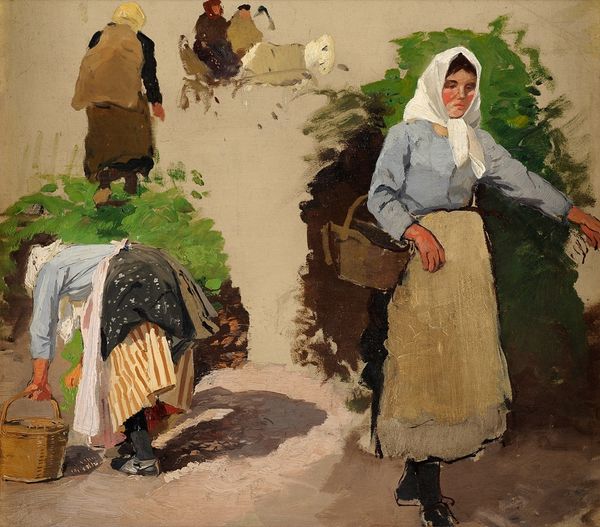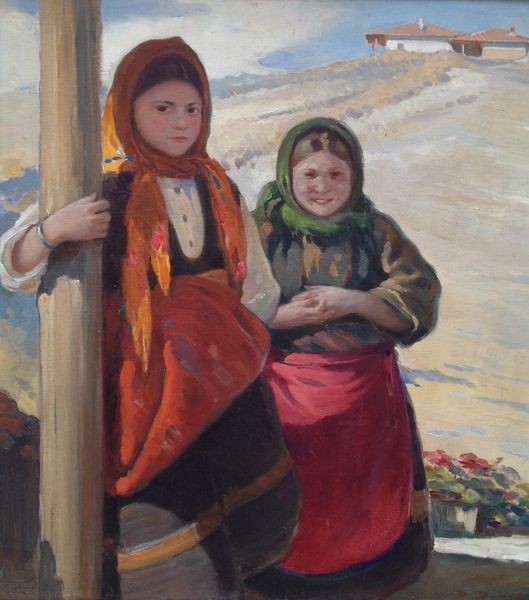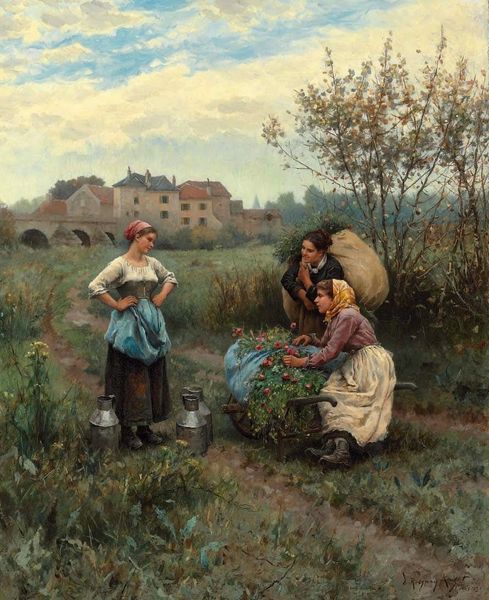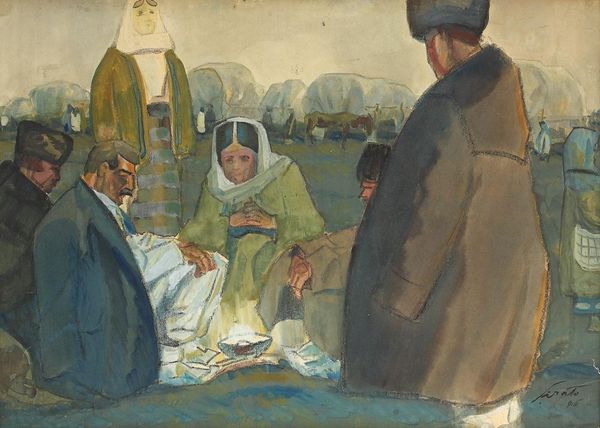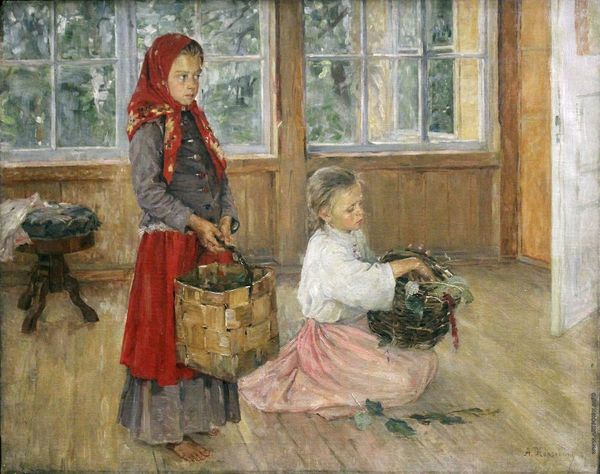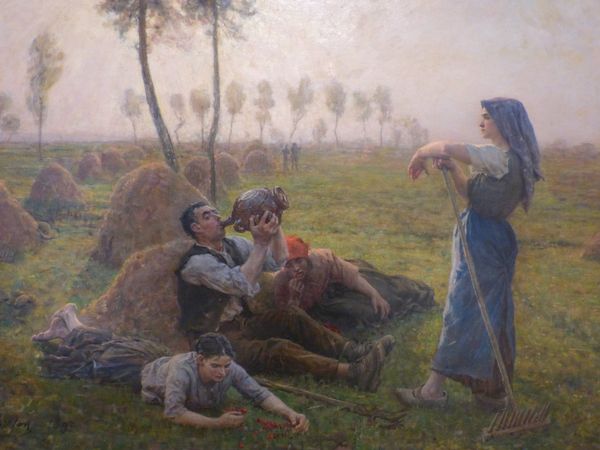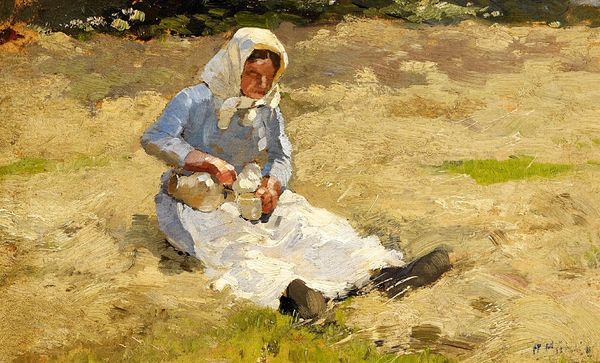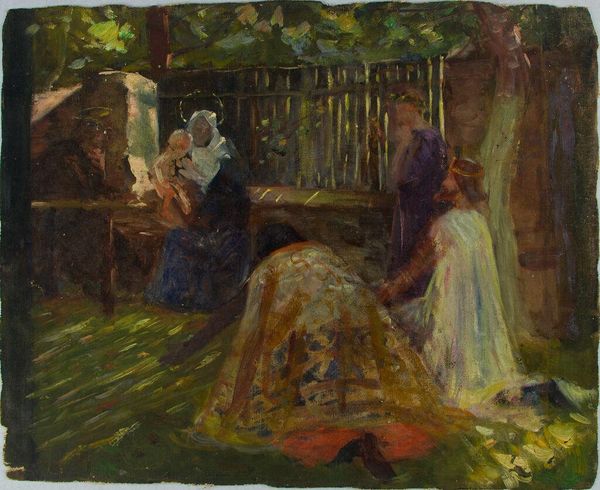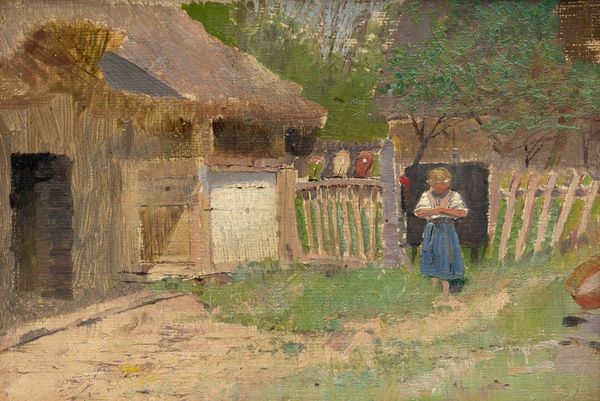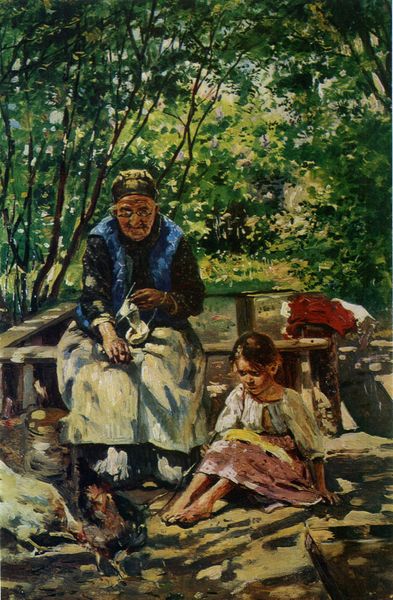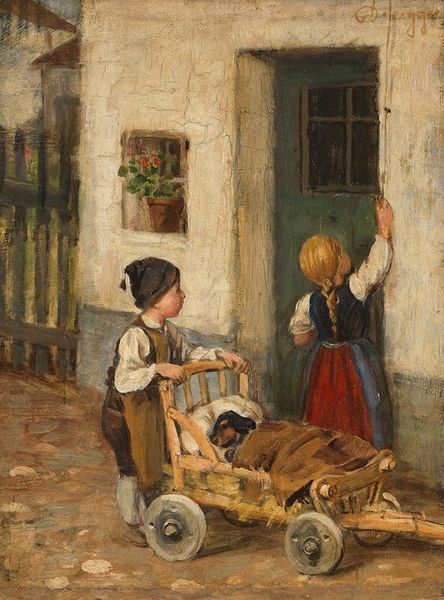
oil-paint
#
portrait
#
oil-paint
#
landscape
#
oil painting
#
folk-art
#
genre-painting
#
realism
Copyright: Alla Horska,Fair Use
Curator: Alla Horska’s “In the Yard,” painted in 1950, offers a slice of life, a tableau of rural existence rendered in oil on canvas. Editor: Immediately, the harmony of light and color strikes me. A red blanket anchors the scene, offset by the subdued greens and browns. There is a comforting balance of mass, line, and space. Curator: The blanket is clearly hand-woven and serves as a playing surface for a child with wooden blocks and acts as the ground upon which a family dog rests. Meanwhile, an older woman sits upon a hewn stump, deeply engrossed in making lace. These are carefully chosen social details. Editor: I notice the way Horska has created depth with atmospheric perspective, using muted colors for the background. I’m captivated by the visual simplicity, the strong horizontals offset by the tree on the left and the subtle diagonal of the blanket. Curator: The materials and processes involved are key here. Horska's engagement with the genre painting tradition intersects with a very deliberate depiction of labor—both the tangible construction of the child’s play and the creation of traditional handicrafts by the grandmother. Consider the realities of post-war Ukraine, the value of these handcrafted goods and these rural lives during an industrial rise and famine, for example. Editor: The texture of the paint itself is also important—the impasto in the foliage gives the background vibrancy while the smoothness used for faces evokes a sense of serenity. And how light affects them! The dog's dark spots almost mirror the darkness that touches the elder’s lower garment. There are repeated motifs like blocks, but on the surface and in layers beneath our attention. Curator: Exactly! What you see is how the materials intersect. Horska seems to make commentary on community and on Ukrainian identity at mid-century via its laborers and makers. These intimate glimpses into domestic production shape a particular image. Editor: For me, the strength lies in the composition—the triangle formed by the figures creates a sense of stability—but the subtle color palette gives it an air of intimacy. This piece feels quiet, observant. Curator: Considering the socio-political climate of the Soviet era in which it was produced, her subject and methods are very impactful. I was happy to discuss it! Editor: Absolutely, understanding how the formal qualities work together brings us closer to what makes the piece so resonant, yes. Thanks!
Comments
No comments
Be the first to comment and join the conversation on the ultimate creative platform.

